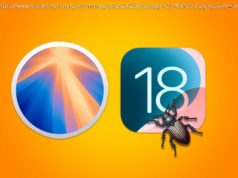TechSpot’s guide to the best smartphones is meant to highlight the stuff that matters, what we’ve bought ourselves, making it easier for you to buy the best possible device given a certain price point.
Throughout the years we’ve reviewed dozens of smartphones and got hands on with plenty others. The good news is that as smartphones have matured, they’ve become so good in terms of hardware and design that it’s getting harder to pick something you will truly regret… or if you’re the glass half empty kinda person, they’ve become so good that picking the one that’s right for you can be a challenging task.
You’ve read the reviews and have formed your own opinions on the devices you’ve owned and currently own, but with our vast access to devices, TechSpot’s guide to the best smartphones is meant to highlight the stuff that matters, what we’ve bought ourselves, making it easier for you to buy the best possible device given a certain price point.
Apple iPhone XS
In numbers
Price:
$999
TechSpot Metascore:
88
User Reviews:
9.6
The best phone you can buy right now is also one of the most expensive handsets in the market. The iPhone XS offers an incremental upgrade over last year’s iPhone X that introduced the notch and a near bezel-less design, inheriting everything that made the phone a hit, while improving in key areas: stronger construction/glass, better waterproofing, faster Face ID, faster wireless charging, more RAM, and better cameras that have also received a software upgrade.
The iPhone XS also sports a stupid-fast A12 SoC that honestly we don’t know what you can do with this thing that you couldn’t do before, but it remains very efficient, and as far as bragging rights go, it’s faster than any other smartphone on the market.
This year the 5.8-inch iPhone XS is joined by the new flagship 6.5-inch XS Max (ridiculous naming and pricing, but pretty solid hardware), which is the exact same phone but sporting a larger display. If your phone is your primary computing device and you enjoy of a more expansive display, then the XS Max is probably worth the extra $100.
Once you live with the iPhone XS, it’s hard to go back to the surfboard designs of past iPhones with their enormous bezels. Many other manufacturers have followed Apple with notch designs that look ugly when you stand to look at them, but when done right (like Apple has), in regular use you don’t really notice it that much. The trend no doubt will be to eliminate this screen cut-out, with some like OnePlus offering a teardrop design for the front camera only.
The iPhone XS uses the notch to house sensors used for Face ID — Apple’s facial recognition/authentication that works extremely well — and also allow the iPhone to produce Portrait Mode (simulated background blur) photos using the front camera, and to create surprisingly fun Animoji.
The iPhone XS and XS Max feature dual rear-facing cameras: a 12-megapixel wide-angle shooter with optical image stabilization and a six-element lens with f/1.8 aperture alongside a 12-megapixel telephoto camera (2x optical zoom), also with optical image stabilization, with a six-element lens and f/2.4 aperture. Apple’s camera system also features Smart HDR that meshes multiple shots into one to get the perfect blend of highlights, shadows and reduced shutter lag. Another new feature allows you to adjust the depth of field after a shot was taken.






